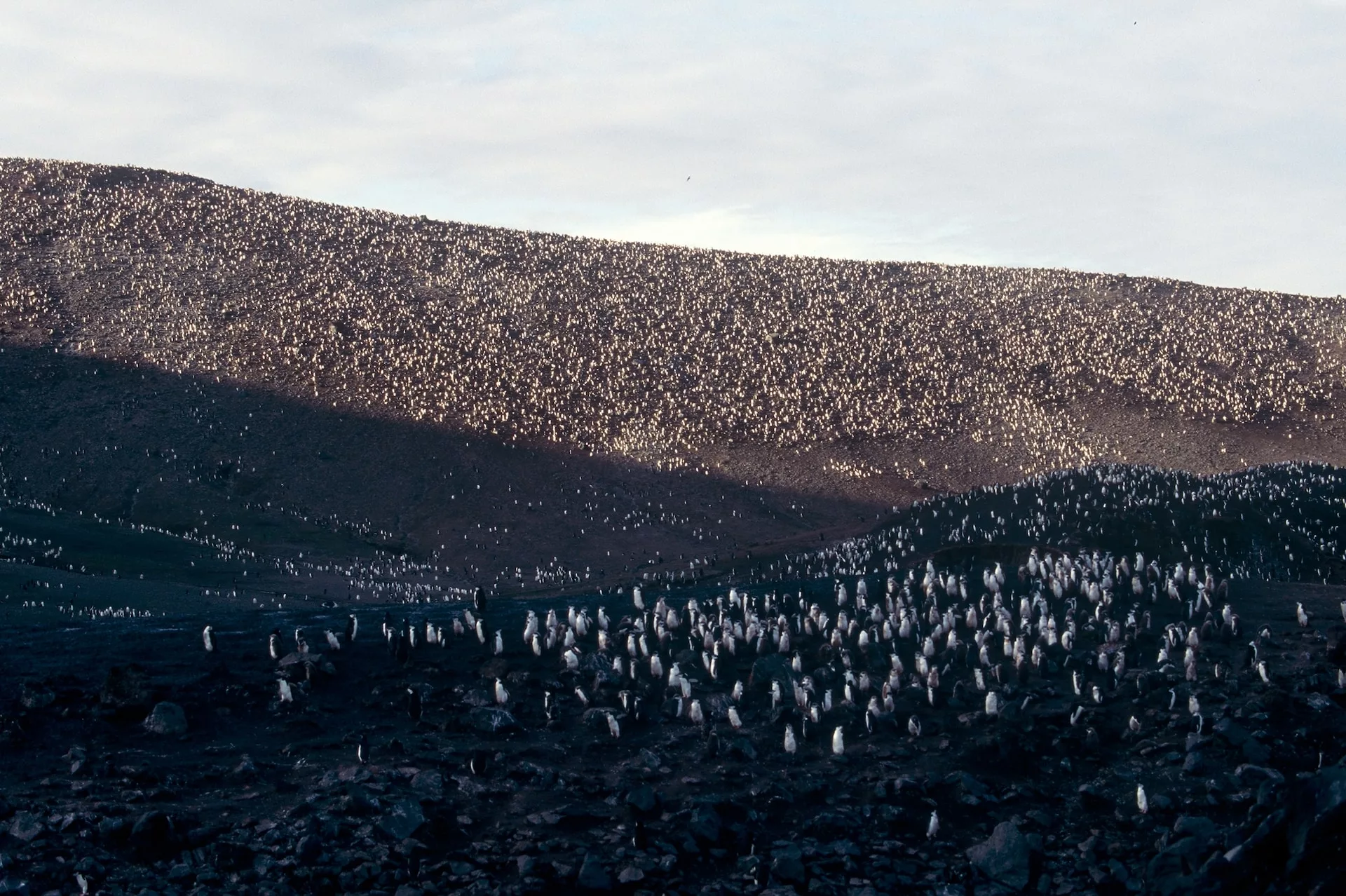Despite the necessity of sleep, hours of unconsciousness poses a vulnerability to wild animals. New findings suggest the Chinstrap penguins overcome this by napping for seconds, thousands of times a day. Photo credit: NOAA via Unsplash
Chinstrap penguins (Pygoscelis antarcticus) build up sleep through microsleeps lasting just a matter of seconds, according to a new study. By dozing 10,000 times per day for an average of four seconds per nap, these penguins can gain some of the restorative powers of sleep whilst remaining vigilant.
In a nesting colony, penguins face threats from animals looking to predate their eggs or chicks, as well as aggression from other penguins. Chinstrap penguins spend much of their time at the nest alone, as their breeding partner will be away for several days at a time, exacerbating the trade-off between rest and vigilance for a penguin parent. Microsleeps appear to offer a solution to this trade-off, allowing a parent bird to remain aware of threats to its offspring while accumulating rest.
By fitting nesting chinstrap penguins on King George Island (Antarctica) with electrodes to monitor brain electrical activity (a non-invasive method causing no harm to the birds), researchers could measure their sleep activity. Video recordings from each nest also allowed these sleep patterns to be corroborated with behavioural observations. The electrodes were able to detect bursts of slow-wave sleep (SWS): the main component of birds’ sleep, characterised by a drop in the rate at which brain cells fire (send an electrical impulse) but an increase in the strength of individual waves (rhythmic electrical patterns from neuron activity). The electrodes also recorded whether sleep was occurring in one or both hemispheres of the brain. The researchers focused on SWS because the electrodes could not detect Rapid Eye Movement (REM) sleep, as its electrical signature matches that of an awake and alert bird. Despite this, some bouts of REM sleep could be detected from recordings from cameras in the breeding colony, with birds shutting their eyes and drooping their heads.
Remarkably, the longest microsleep lasted just 34 seconds. Nevertheless, despite sleeping in such brief fragments continuously throughout the day and night, the penguins managed to accumulate over eleven hours of sleep over 24 hours, characterised by eight and a half hours of SWS in both hemispheres, and around three hours of sleep for each hemisphere individually. More importantly, the penguins also accrued at least some of the restful benefits of sleep, given the extensive investment in microsleeping and successful breeding that still occurred.
Remarkably, the longest microsleep lasted just 34 seconds.
Although only fourteen birds were sampled in this study (and therefore coverage across the colony was quite limited), the researchers could draw out some colony-level patterns. Birds at the colony edge likely face greater predation risk of their offspring. Therefore, it is logical to predict that penguins at the edge of the colony would have more fragmented sleep due to an increased need for vigilance. Despite this prediction, the opposite pattern emerged: birds in the centre of the colony had more disturbed sleep as a result of aggressive interactions and noise from other penguins in the chaos of the colony centre.
This pattern of sleep and rest is one of the most extreme cases recorded in animals, with the added value of this study occurring in a natural setting as opposed to a laboratory, as with much previous research into wild animals’ sleep behaviours. The influence of ecological context on sleep in this study highlights the possibilities of laboratory-induced influences on other behavioural studies on wild organisms.
This pattern of sleep [microsleeps] and rest is one of the most extreme cases recorded in animals.
If studies could go on to prove that penguins still gain the benefits of sleep despite this extreme incrementation, it would challenge the current paradigms of sleep fragmentation being consistently detrimental. Chinstrap penguins have turned a potentially detrimental habit into a survival mechanism central to their breeding strategy, using micro-sleeps to resolve the trade-off between rest and vigilance.





